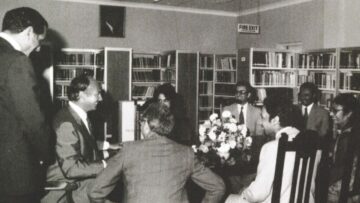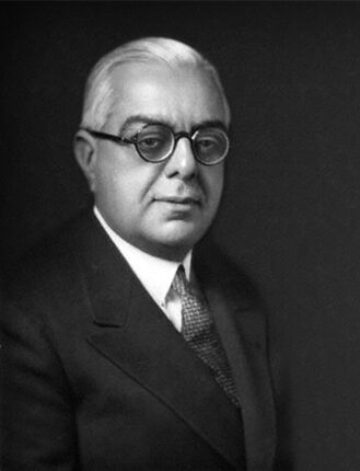Shi‘a Imami Ismaili Muslims recognise the authority of the Imams descended from the ahl al-baytLit. ‘the people of the house’, meaning the Prophet Muhammad and members of his household including especially his cousin and son–in–law ‘Ali b. Abi Talib, his daughter Fatima and his…, household of Prophet Muhammad (may peace be upon him and his family), through his daughter Hazrat BibiA word of East Turkish origin which means old mother or a grandmother. It is also used in Persian and Urdu in the sense of “woman of the house”, as… Fatimah (pbuh) and his son-in-law and spiritual successor, Imam Ali (pbuh). While IsmailisAdherents of a branch of Shi’i Islam that considers Ismail, the eldest son of the Shi’i Imam Jaʿfar al-Ṣādiq (d. 765), as his successor. share common doctrines with the broader Muslim community in accepting the unity of God, belief in the finality of Prophet Muhammad and in the hereafter, the distinguishing feature of the community, as for all Shi‘a Muslims, is the centrality of the doctrine of Imamat. In Shi‘i traditions, the Imam is believed to inherit the spiritual authority and the esoteric knowledge of the Prophet. As such, each Imam in every age is deemed to be responsible for providing the interpretation of Allah’s final message in any given era and doing all he can to safeguard and secure the material well-being of his community.
It is important to note here that Imamat is a pan-Islamic issue as it is related to the question of the relationship between authority and power, which is of universal importance. All societies have rulers or some form of governance. There are times when the power invested in the ruler or government becomes devoid of legitimacy and becomes sheer power which, in its extreme form, is called a dictatorship. In Muslim history, following the demise of the Prophet, there was a question about who had the authority to interpret the faith and lead the community, and what was to be the basis of that authority. Those who governed Muslim societies were often at pains to legitimise their power through their relationship to the Prophet’s household, or the support of the ulema, or the consent of the populace. The Shi‘a concept of religious authority was based on divine designation through the Prophet and direct descent from the Prophet, through Hazrat ‘Ali and Bibi Fatimah.
Authority in any form, political or religious, is closely connected with obedience and a willingness to follow someone who is believed to be exercising power legitimately. In religious terminology, particularly in Shi‘a doctrines, this is linked with walaya whose meaning covers concepts such as love for and obedience to the people of the Prophet’s household. It is rooted in the Shi‘a interpretation of several verses of the Qur’an(also Koran. Arabic term meaning, ‘recitation’ or ‘scripture’): Muslims believe that the Holy Qur’an contains divine revelations to the Prophet Muhammed received in Mecca and Medina over a period of… More, traditions of the Prophet and the legacy of Shi‘a leadership through its various historical manifestations.
The Ismaili Imamat’s institutional endeavours reflect its encounter with modernity in its European sense, particularly after the migration of the 46th Imam from Iran to India in the 19th century. Modernity carries a baggage of rationality, science and effective social and political institutions. A distinction ought to be made here between modernisation and modernity. Historically, modernity is about conceptual and philosophical shifts in the outlook of post-medieaval European societies, while modernisation is a technological shift in the methods of running the affairs of society in a more effective way. This is reflected in the Ismaili community in the early 20th century in Imam Sultan Mahomed Shah’s endeavours to develop health, education and financial institutions for the community. These institutions became the foundations of the current network of institutions of the community and the Imamat.
As regards to modernity, the Imamat represents a conscious effort to preserve the fundamental value system of the community both in terms of its broader Islamic underpinnings and the Shi‘i legacy of the role of intellect in faith. As such, the Ismaili Imamat has not embraced European modernity with all its historical, political and cultural specificities. For the Ismaili Imamat, modernity is not exclusively articulated, understood or practiced in western or European terminology, but in a manner which is compatible with the Ismaili Muslim value system. This system is informed by the teachings (ta‘lim) of the Imam-of-the-Time.
In order to actualise the vision of the Imamat, the vehicle of institutions was necessary. The institutional framework of the Ismaili community today is formulated in the Ismaili Constitution which has gone through several phases of development since the first drafts were drawn up in the early 20th century during the Imamat of Imam Sultan Mahomed Shah. The Constitution consists of a Preamble which broadly describes the core doctrinal beliefs of the community and the centrality of the Imam’s authority in guiding the community as well as a series of rules and regulations for the functioning of the various institutions within and beyond the community, including the Aga Khan Development Network (AKDNThe Aga Khan Development Network (AKDN) is a contemporary endeavour of the Ismaili Imamat to realise the ethics and social conscience of Islam through institutional action. More). The Constitution is a manifestation of a pluralist and diverse community of Ismailis who now live in over twenty-five countries around the world. It bears many elements which resemble a social contract, but it is indeed more anchored in values and traditions which portray it as a covenant, reflecting the nature of the Imam’s authority. The rational and bureaucratic nature of the institutions, be they community or AKDN institutions, are similar in form to modern institutions, but with the added element of an Ismaili value system which is rooted in the vision of the present and living Imam.
The vision of the Imam is not only reflected in the structure of the institutions but also in a constellation of terms, vocabularies, and concepts. These include pluralism, cosmopolitan ethics, sustainable development and a set of other interrelated concepts that inform his commitment to ‘improving the quality of life’ of the community and of those amongst whom it lives. This commitment is non-denominational and examples of this can be found in the work of a number of institutions, such as the Aga KhanA title granted by the Shah of Persia to the then Ismaili Imam in 1818 and inherited by each of his successors to the Imamate. University, which offers opportunities for educational excellence without any discrimination based on faith, race or gender. This spirit can also be seen in the restoration of historic cities and various projects of the Aga Khan Trust for Culture in which the primary beneficiaries are not Ismailis.
This attention to improving the quality of life is associated with and predicated by a bifocal leadership which gives equal attention to both the material aspects of the life of an Ismaili and its spiritual dimension; not forsaking one for the other. In the language of the Imam, this is described as keeping a balance between dinIn the Qur’an it means a) retribution, judgment (as in yawm al-dīn, the day of judgement); b) religion in a broad sense. More and dunya. As such, the Imam’s role is not limited to just religious and other-worldly functions.
The presence of a living Imam provides the community with the dynamism to strive for solutions to problems which cannot be solved by conventional or traditional methods. There is no one unchanging set of rules and regulations; the presence of a living Imam is meant to keep the community from falling into such rigidity. The centrality of the Imam’s guidance is the living tradition of this community which enables it to address the dynamic challenges of the modern world.
“Historically, Ismailis are united by a common allegiance to the living hereditary Imam of the time in the progeny of Islam’s last and final Prophet Muhammad (may peace be upon him) through his daughter FatimaDaughter of the Prophet Muhammad and his first wife, Khadīja bint Khuwaylid. Also wife of ʿAlī b. Abī Ṭālib and mother of al-Ḥasan and al-Ḥusayn. and her husband, Hazrat Ali, the Prophet’s cousin and the first Shia Imam. In the Muslim ethical tradition, which links spirit and matter, the Imam not only leads in the interpretation of the faith, but also in the effort to improve the quality of life of his community, and of the wider societies within which it lives; for a guiding principle of the Imamat’s institutions is to replace walls which divide with bridges that unite.”
His Highness the Aga Khan IV. Foundation Ceremony, Delegation of Ismaili Imamat, Ottawa, Canada, 6 June 2005
Author

Dr Daryoush Mohammad Poor
Dr Daryoush Mohammad Poor is the Interim Head of the Constituency Studies Unit, Associate Professor in the Department of Academic Research and Publications at The Institute of Ismaili Studies, London, and a lecturer for the Department of Graduate Studies. He is also the editor of the Ismaili Heritage Series.


